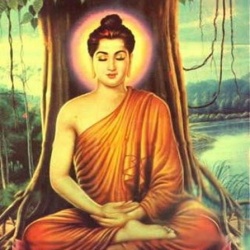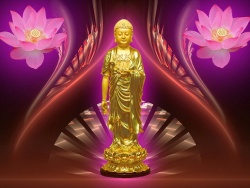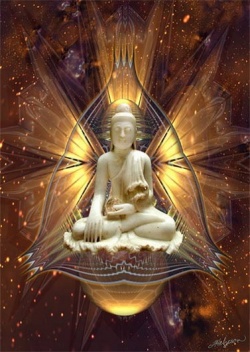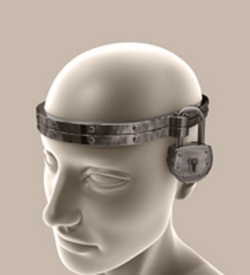Women in medieval China
China has always been a traditional society, practicing customs that date back to the Shang Dynasty (circa 1500 b.c.e.). Medieval China is no different. One of the prevailing constants was misogyny of women. It dates back to before Confucianism, but became solidified and pervasive by the fifth century b.c.e. Confucianism inculcated in society that women were by nature quarrelsome, jealous, petty-minded, and vastly inferior to men. Most scholars view the property distribution at the core of this misogyny, but derogatory remarks and actions against girls and women of all classes will be noticeable. In this chapter we will be discussing women's roles in the Tang, Song or Sung, Kuan or Mongol and the Ming dynasties, 618-1644. Women's rights and freedoms varied by dynasty. With the incoming influence of Buddhism from India, and changes in the philosophy of Taoism, medieval Chinese society undergoes some significant transformations in the medieval centuries.
From the Tang to the Ming dynastic periods the vast majority of Chinese lived in villages that ranged in size from a few dozen people to several thousand. Life in these villages was like life in medieval European villages. Peasants rarely left their village, but the family unit was an extended on not nuclear as in Europe. At least three generations lived together, especially in the rice growing regions of Central and Southern China.
By the eighth century Buddhism was fully established in China. While basically Buddhism brought better living conditions for women, it still brought some mixed responses partly because no single Buddhist ideology relating to women existed. As Buddhism expanded into China from India and the trade routes, Mahayana Buddhism with a bodhisattva component resonated in China rather than the more ascetic Theravada Buddhism. According to Buddhist doctrines, a bodhisattva has the power to embody itself in any form, whether that is a male, female, child or even an animal. This embodiment is dependent on the type of being the bodhisattva is seeking to save.
There has been much scholarly debate regarding the origins of devotion to the famous Bodhisattva Kuan Yin. She is considered the compassionate goddess, and revered in China as much as the Virgin Mary is for the Catholics. Interesting, Kuan Yin as late as the tenth century was still being portrayed as a male. With the introduction of Tantric Buddhism into China in the eighth century, an image of the Bodhisattva as a beautiful white-robed goddess became predominant. By the ninth century that was a statue of the female Kuan Yin in every Buddhist monastery in China. Today she is worshipped by Taoists as well as Mahayana Buddhists. In tandem with this belief was the idea that women came to symbolize all that must be transcended in order to achieve enlightenment. More discussion on this will follow in the section on medieval women in Japan.
In the Medieval centuries, there was still a strong role for the Queen Mother of the West, Hsi Huang Mu. Medieval Taoists considered her the embodiment of the ultimate Yin: she was the dark female force, she created the world, she was a mother, teacher, and lover, and it was her role as a lover with divine passion that is clearly evident. Thus, the Queen Mother of the West is both transcendent and divine passion.
There will be a backlash against Buddhism in the late Tang and Song Dynasty that led unfortunately to the reassertion that women were again inferior. Confucian ideas were popular once more. Generally speaking, the higher the family's status, the more Confucian they were. This is going to lead to a long period of decline for women's status and positions in the coming centuries.
Rudimentary education was given to girls just enough so they could read simple versions of Confucian philosophy. His ideas were edited to emphasize the lowly role women were expected to play. Additionally, women's sexual purity must be protected at all costs. The woman was obligated to practice self-mutilation or commit suicide to prevent being raped.
Marriage and divorce customs were typical for the times. Mothers took an active interest in the selection of a marriage partner for their children, but the formal arrangements were made by a matchmaker, who usually was an older woman. The girl's parents were to provide a dowry to the groom. Women were sixteen to twenty when they married, and the men were a couple of years older. The actual wedding rituals occurred when the bride left her natal home with her groom, his friends and relatives. This was the first time the bride had seen her groom. When the couple arrived at his home, the bride knelt and bowed to her new parents-in-laws, and to the tablets representing the family's ancestors. Then the couple drank some wine from the same cup. Later when they were shown to their bedroom, beans and rice previously tossed on the bed greeted them, symbolizing fertility. Often the parents added a new wing to the house for the newly married couple if enough money was available.
The new wife was usually on a three to four month trial. Even if the husband liked his wife, but his parents did not, then he was to divorce her. The wife's security was ensured when she bore a son. Women who did not marry remained spinsters at their natal homes. If the wife did not provide her husband with a male heir, then he was permitted to take a second wife. His first wife had no right to get a divorce. As an old Chinese proverb stated: "Marry a chicken, follow the chicken, marry a dog, and follow the dog."
When a woman became a mother-in-law, then her status was raised. As the eldest female she could enjoy her grandchildren and help with their education. She had more time for religious devotions. We find that sons were usually devoted to their mothers. In the Song Dynasty, neo-Confucianism was often blamed for the declining status of women. Cheng Yi, the best known neo-Confucian teacher once told followers that it would be better for a widow to die of starvation than to lose her virtue by remarrying. While Song widows frequently remarried, later centuries Cheng Yi's statement justified widows not remarrying. During this dynasty a wife's property automatically passed to her husband. Women were forbidden to remarry if their husbands divorced them or they died.
Wealthy Chinese husbands sometimes selected concubines who lived in a separate room in the home. A concubine sometimes competed with the legal wife for precedence. Children by concubines were accepted just like the legal children were. If a concubine's child was a son and the legal wife only had daughters, then in the wife's old age, she was dependent on the concubine's son. Poor families often sold their daughters to wealthy villagers to serve as concubines.
Female infanticide was not uncommon in times of famine to allow the rest of the family to have food. Another alternative was to sell their daughters into slavery. Even in good times daughters were told that food was wasted on them because they would someday marry outside their ancestry. This would then increase the size and wealth of the husband's family and not the natal one. Daughters' names were not even entered in the familial temples, a clear sign of daughters' insignificance.
This brings us to the most famous practice in medieval and modern China, foot binding. Nothing was as restrictive as this practice begun at the end of the Tang and beginning of the Song dynasties, circa 960-976, Foot binding was reportedly done to imitate the imperial concubine who was required to dance with her feet bound. By the twelfth century the practice was widespread, but now the girls' feet were bound so tightly that they were unable to dance and even had trouble walking. For some Chinese men it was an erotic fetish, and also used to immobilize concubines who wanted to escape. Ironically it was not recommended by neo-Confucian teachers, but rather it was associated with the pleasure quarters, and women's efforts to beautify themselves. However, it also shows that women had little important productive work to perform. The process was long and painful. When a young girl was three years old, the toes were broken. Then their mothers bound the girls' feet at age five to eight with long strips of cloth to keep the toes from growing. Only the big toe was not bent under. After the Song dynasty ended, the practice moved beyond the elites. It was especially common in the north and central China, but not in the southern area where rice was growing. Girls and women worked in the rice paddies. We find that only the girls' feet were bound tightly who had servants, as it was so difficult to walk. The ideal foot size was called a three inch "golden lotus", but actually was no longer than 3.9 inches. During the late imperial period it became increasingly popular, when an estimated one-half to two-thirds of females' feet were bound. Foot binding became a rite of passage. It was part of becoming a woman, and would add to their prospects for a better life and prominent marriage. Chinese women did not always see themselves as victimized by the practice of foot binding. After the establishment of the First Chinese Republic in the twentieth century, it was legally banned. But even today it is not unusual in Mainland China to see older women still limping.
What recourse did women have or do with the oppressive family systems? In the gentry families women needed more than wisdom and assertiveness to survive. They needed resilience, toughness, and the ability to engage in what Margery Wolf has called uterine politics. Women manipulated property and Confucian values to bring them power and relative security in their old age. Women could acquire reflective authority by tying their sons to them and then assisting them to gain position and power for themselves. This was in keeping with one of the cornerstones of Confucian philosophy, filial piety. This system guaranteed conflict among women. An axiomatic element in Chinese families was that the gain of a woman always came at the expense of another woman. Helpful to women during the Tang and Song eras was the customs that women were able to maintain closer natal family relationships than in later dynasties.
More information is known from the Song and later dynasties about the economic activities of girls and women. Families who could afford to kept their daughters at home where there was plenty of work for them to do. The standard activities for women were tending the children, preparing meals, and assorted clothing production: spinning, weaving, and sewing. Women were maid servants, midwives, and farmers' daughters wove mats. Widows were allowed to run inns. Two areas of production where females were actively engage in were sericulture, tea production and rice growing. All were extremely labor intensive, and women served prominently in these areas. Tea came into China from outside, and was initially used as a means of keeping the Buddhist novices awake during meditation, but by the Tang time, tea was in general use. Women coddled silk worms to get them to spin their cocoons for the omnipresent production of silk cloth, a major export for China.
Women in the royal and aristocratic circles were among the fortunate few in traditional China. Many servants waited upon them, leaving their days free for family outings, assorted crafts, indoor and outdoor games such as backgammon and polo. Some women were even active in politics. Wu Zhao (626?-706?) is an outstanding examples. Popularly known as Empress Wu, she was selected by the Tang Emperor Taizhong as one of his concubines in his vast harem. Apparently she at some point was also a Buddhist nun. After the Emperor's death Wu rose to the position of supreme power at court. At first she was content to rule through her sons, but then in 690 she declared herself Empress of China. To bolster her claim of legitimacy she cited a Buddhist Sutra, where a woman would rule the world seven hundred years after the death of Buddha. Wu became a major patron of Buddhism, and during her reign Buddhist rituals became an integral part of the imperial observances. Later, Chinese historians vilified her, but actually she was quite a capable ruler. Wu was responsible for giving meaning to the Civil Service Examination System. She was the first to select successful graduates of examinations based on Confucian doctrine for the highest positions in her government. During her last years in office, she reportedly fell under the influence of bad courtiers, and she was deposed in 705 at the age of eighty.
MONGOLIAN RULE OF CHINA
The Mongol or Yuan Dynasty in China lasted several hundred years. Genghis Khan was able to unite his people of 200,000 to eventually under his grandson Kublai Khan, who ruled 100 million Chinese. Genghis Khan did not set out to create the largest contiguous Empire in History, but apparently the climate changed and as the temperature declines, the growing season was reduced, forcing the Mongols to move. In this movement of conquest, Mongolian women were utilized as much as the men. Women’s important roles repeatedly recorded in Mongol, Chinese, and European chronicles of the thirteen century. Later translators of one source in particular, the Secret History, sought to downplay the role of women and show the superiority of men.
Mongolian women enjoyed substantially stronger social and political positions than in China. The Mongols believed it was advantageous if a man’s wife was somewhat older than he was. She would be wiser than him, and able to guide him in worldly matters. It was considered unmanly and a sign of immaturity if a Mongol man did not listen to the advice of his woman. When Genghis Khan’s father died, his mother Hoelun successfully roused the people to follow her husband’s banner and tribe, thus leading to Genghis becoming the leader. Genghis related how his mother Hoelun facilitated his career by her skills and labor. Later Genghis described how the advice of his wife, Borte, led to his breaking the alliance wit his blood brother, whom Borte suspected was plotting against Genghis. This was no small thing to do since this was a spiritual brotherhood and according to old Mongol tradition was more binding and obliging than any family tie. Many more stories abound of Borte’s influence.
Marriage and divorce patterns for the Mongols are instructive. Before Genghis rose to power, extramarital affairs generally punished the woman with her death. After his rise to supreme power, he changed the laws and ruled that both the man and woman were killed for adultery. While Mongolian society was polygnous, Mongol women could divorce if the marriage was unsuccessful. If the woman was a divorcee or a widow, she was free to remarry, and the new husband accepted her previous children as his own. The new husband acquiring a ready-made family was the result of a pre-existing spiritual connection between them, and even considered more important than a biological one. Mongolian women could also choose not to marry. Wives could inherit property from deceased husbands, and the mother became head of the family if the father died.
Women were described as proficient and merciless warriors. They were routinely given extensive military training. The strongest and most skilled of these women fought in wars with the men. An Italian writer when visiting the Mongols in china wrote girls and women ride and gallop as skillfully as men, and can ride for as long as men. Women even carry quivers and bows. The famous Marco Polo told about Kublai Khan’s nephew and rival Kaidu’s daughter, Aigiarn or Khutulun. Not only was she noted for her beauty, but for her immense strength of body. She was so strong that she surpassed every male Mongol warrior in physical strength and skills. Aigiarn refused to marry a man unless he could beat her in wrestling. According to one of the stories, Aigiarn forced any suitor to bring one hundred horses as a forfeit. Apparently over time she bested one hundred strong men and collected 10,000 horses. One suitor brought one thousands horses, and begged Aigiarn to purposely loose to him. She would not and she won.
Shamanism was important to Mongolian religious practices. It was the prevalent communal religious experience. While both sexes were shamans, women were better at receiving messages from the other world.
Women’s labor was crucial to the Mongolian economy. They packed up and moved the yurts. They made clothes, rugs, shoes, leggings, flags, and coverings for the horses. Anything made from leather was their job. Women drove the carts and even repaired them. They processed milk, cheese, and meat, all basic to the Mongolian diet. Usually each adult woman had her own herd of sheep to tend to. Trousers were the normal costume for the Mongolian women. As a result of the women’s ability to maintain Mongolian subsistence economy, the entire male population was free to hunt or fight.
Two of the most famous Mongolian women were Sorghanhtani Beki, Kublai Khan’s mother, and Chabi, his wife. Beki was probably the most famous Mongolian mother. She was also Genghis Khan’s daughter-in-law. A physician wrote: “If I were to see among the race of women another who is so remarkable a woman as this, I would say that the race of women is superior to the race of men.” Beki set up the process for all four of her sons to become Khans. Although she herself was illiterate, she recognized that her sons needed to become educated. Each one was taught a different language that the Mongols needed to administer their vast domain they had conquered. Sorghaghtani became a Nestorian Christian, and recognized that if the Mongols were to administer their vast empire, one of the ways that would accomplish this was to ingratiate themselves with the clergy of various religions. She and her sons protected and provided support for each of the religions within the Mongolian domains. Beki supported Muslims, Buddhists, and Confucianists. She introduced her son to the ideas of Confucian scholars to help him understand and be prepared to rule China. Exploitation of subjected peoples for her made no sense, and ravaging the economy of conquered territories would ultimately be self-defeating. The Chinese peasantry was also supported by her. If the Mongols bolstered the local economy, this would lead eventually to increased production and tax collections. Each of her sons followed the same philosophy. Kublai Khan even requested of Marco Polo to have the Pope send one hundred representatives from the Vatican to explain Catholicism to him. If he found it pleasing to him, then he would convert the Mongols and all the Chinese. Unfortunately, the Pope did not respond.
Chabi, Kublai Khan’s wife played an important role in ensuring that he carried out his mother’s game plans. Chabi and Kublai Khan took on the roles as Chinese emperor and empress, and restoring Confucian rituals to court. They moved the capital from Mongolia to Beijing, China. Both were patrons of the Chinese artists and Chinese Drama. Chabi also supported Tibetan Monks who began converting the Mongol elite to Tibetan Buddhism.
Princess Sengge, one of Kublai Khan’s great granddaughters gathered together a spectacular collection of Chinese Art. Guan Daosheng, was a renowned woman painter contemporary with Kublai Khan. The subjects of her paintings were bamboo, orchids, and plum blossoms. She was cherished by contemporary connoisseurs of art, but was seen as more decorative than provocative.
As the Mongols integrated into Chinese culture, by the fourteenth century women were so acculturated that they no longer played roles as leaders.




